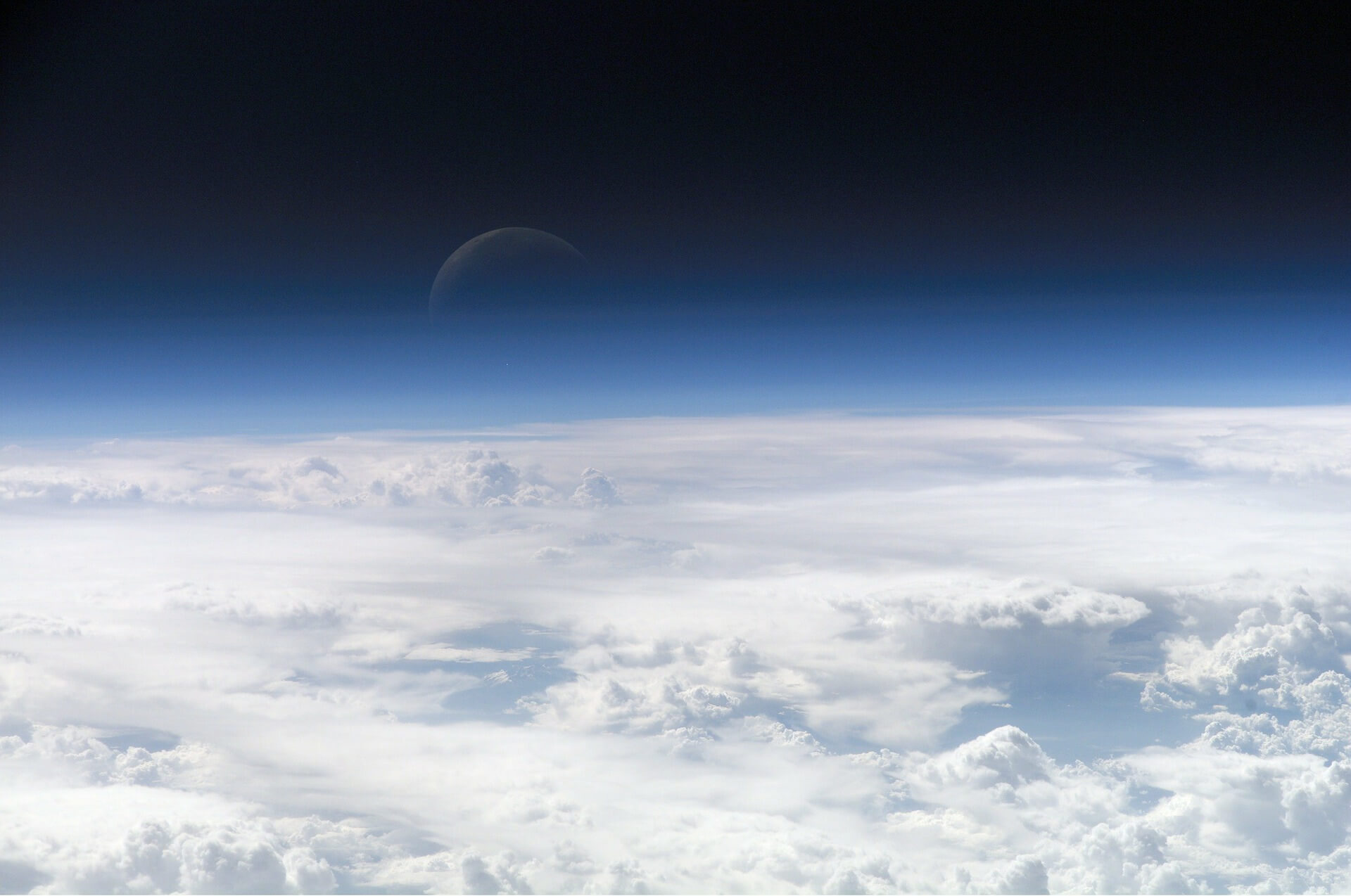What is the Earth Atmosphere made of?
While oxygen is an important constituent for most life on Earth, the most of Earth’s atmosphere is not oxygen. Earth’s atmosphere consists of about 78% nitrogen, 21% oxygen, 0.03% carbon dioxide, and 0.9% argon with tiny percentages of other elements. Our atmosphere also comprises of water vapour. Besides, Earth’s atmosphere comprises the remnants of dust particles, pollen, plant grains and other solid particles.
The three main components of Earth’s atmosphere are nitrogen, oxygen, and argon. Water vapour consists of nearly 0.25% of the atmosphere by mass. The aggregation of water vapour differentiates remarkably from about 10 parts per million by volume in the coldest portions of the atmosphere. It is done to reach an extent of about 5% by volume in hot, humid air masses. The aggregations of other atmospheric gases are usually brought into the consideration in terms of dry air leaving any water vapour.
The gases which remain behind are often known to be the traces of gases. Out of which we also include the greenhouse gases, which in Earth’s atmosphere trap heats. Besides, we also add carbon dioxide, methane, nitrous oxide, ozone along with the filtered air which comprises of trace amounts of many other chemical compounds.
Stratification
Earth’s atmosphere stretches from the surface of the planet to as about 10,000 kilometres above. And after reaching that point, the atmosphere blends into space. Not every scientist knows where the actual upper boundary of the atmosphere is. However, they might agree upon the fact that the bulk of the atmosphere is placed close to Earth’s surface up to a distance of roughly eight to 15 kilometres.
Based on the temperature, the atmosphere of Earth is sectioned into five different layers. There layers that lies closest to Earth’s surface is the troposphere. They outstretch from nearly seven and 15 kilometres from the surface. The troposphere is known to be the thickest at the equator and as it move towards the poles it keeps on getting thinner. The most of the mass of the entire atmosphere lies in the troposphere. Majority of the water vapour in the atmosphere, along with dust and ash particles, are found in the layer of troposphere. This also explains why most of Earth’s clouds are seen to be located in this layer. With the increase in the altitude the temperatures in the troposphere decrease.
Normally, with the increase in the altitude, the air pressure and density decrease in the atmosphere. However, temperature has a more complex outline with altitude, and may remain relatively constant. Though, there are chances for it to increase with altitude in some regions. The temperature behaviour imparts an essential metric to vary atmospheric layers. That is why; Earth’s atmosphere can be sub-divided into five main layers, also known as atmospheric stratification. If we exclude the exosphere, then the atmosphere will only have four primary layers. These layers are the troposphere, stratosphere, mesosphere, and thermosphere. From highest to lowest, the five main layers are:
- Exosphere
- Thermosphere
- Mesosphere
- Stratosphere
- Troposphere
Atmosphere layers
Thus, as we discussed, Earth’s atmosphere is fractioned into five main layers namely the exosphere, the thermosphere, the mesosphere, the stratosphere and the troposphere. With the increase in the higher layer, the atmosphere thins out until the gases disappear in space. There is no definite boundary between the atmosphere and space. However, an imaginary line which is nearly 100 kilometres from the surface, namely the Karman line. This line lies normally where scientists say atmosphere meets outer space.
Troposphere
The troposphere is the layer closest to Earth’s surface, which is around 7 to 20 km thick and comprises of half of Earth’s atmosphere. Air is known to be warmer near the ground and gets colder as it reaches upwards. Almost all of the water vapour and dust in the atmosphere are in this layer and that is why clouds are usually found in the layer of troposphere.
Although disparities do arise, the temperature generally diminishes with the altitude. And that in turn increases in the troposphere for the troposphere is mostly heated through transmission of the energy from the surface. The troposphere is thicker and way denser than all its overlapping atmospheric layers. This is because of a massive atmospheric weight lies on top of the troposphere and makes it to be severely flattened.
Almost all atmospheric water vapour or moisture is uncovered in the troposphere, so it is the layer where most of Earth’s weather patterns occur. On the fundamental basis, it has all the weather-associated cloud genus types caused by active wind circulation. Though very tall altocumulus thunder clouds can get inside the tropopause from below and hikes into the lower part of the stratosphere. Most typical aviation activity occurs mostly in the troposphere, and it is the only layer that can be accessed by propeller-driven aircraft.
Stratosphere
The stratosphere is the second layer within the layers of atmosphere. It starts surpassing the troposphere and ends about 31 miles over the ground. Ozone is found in abundance here and it boils the atmosphere while also captivating dangerous radiation from the sun. The air here is highly parched. In comparison with the sea level, it is about a thousand times thinner in the stratosphere because of which, this is where jet aircraft and weather balloons fly.
The temperature of stratospheric outline forms very strong atmospheric conditions. Therefore, the stratosphere lacks the weather-producing air turbulence that is so ordinarily occurring phenomenon in the troposphere. So the stratosphere is mostly free of clouds and other forms of weather. However, polar stratospheric or nacreous clouds are seen time-to-time in the lower part of this layer of the atmosphere where the air remains the coolest. Thus, the stratosphere is the highest layer that can be accessed by jet-powered aircraft.
Mesosphere
The mesosphere begins at 31 miles and extends to about 53 miles high. The topmost area of the mesosphere, also known as the mesopause, is the coolest region of Earth’s atmosphere. It has temperatures averaging about minus 130 degrees F (minus 90 C). And this makes them unsure if the meteors burn up in this layer. This is because the Jets and balloons don’t go high enough, and satellites and space shuttles orbit too high.
Thermosphere
The thermosphere is known to be the second highest layer of the atmosphere which extends from 56 mile to between 310 and 620 miles. The height of the thermopause differentiates significantly because of the changes in solar activity. Due to the thermopause lying at the lower boundary of the exosphere, it is also termed as the exobase. The lower part of the thermosphere, above Earth’s surface, consists of the ionosphere. The thermosphere is regarded as a part of Earth’s atmosphere, but air density is so low that most of this layer is what is usually thought of as outer space. In fact, this is where the auroras occur, space shuttles flew and where the International Space Station orbits Earth. Charged particles from space collide with atoms and molecules in the thermosphere, activating them into higher states of energy. The atoms shed this excess energy by emitting photons of light.
The temperature of the thermosphere keeps on accelerating with height and can rise as high as 1500 °C. Also the gas molecules are miles apart that its temperature in the usual does not make much sense. In here, the air is so esoteric. Such that an individual molecule of oxygen, for example, which travels an average of 1 kilometre between collisions with other molecules. Albeit the thermosphere has a high proportion of molecules with high energy, it would not feel burning to a human body in direct contact. And that happens when its density which remains too low to transmit a notable amount of energy to or from the skin. Also this layer is completely cloudless and free of water vapour.
Exosphere
The exosphere is known to be the highest layer of the atmosphere, which is extremely thin. It is where the atmosphere join forces with outer space. It is composed of wide dispersed particles of hydrogen and helium. Being the outermost layer of Earth’s atmosphere, Exosphere expands from the exobase. It is known to be at the top of the thermosphere at an altitude of about 700 km above sea level, to about 10,000 km. This is where it combines with the solar wind.
This layer mostly constitutes of exceptionally low densities of hydrogen, helium and several heavier molecules. It also comprises of nitrogen, oxygen and carbon dioxide nearer to the exobase. The atoms and molecules are so far distinctive that they can travel hundreds of kilometres without running into one another. Hence, the exosphere no longer acts like a gas, and the particles constantly escape into space. These free-moving particles may migrate in and out of the magnetosphere or the solar wind.
The exosphere is placed far too above the Earth in case of any meteorological happening. The exosphere contains many of the satellites orbiting Earth.
References
- Earth’s Atmosphere: Composition, Climate & Weather – Space
- Atmosphere – National Geographic
Want to learn more about December Solstice traditions and customs? Learn more here.


